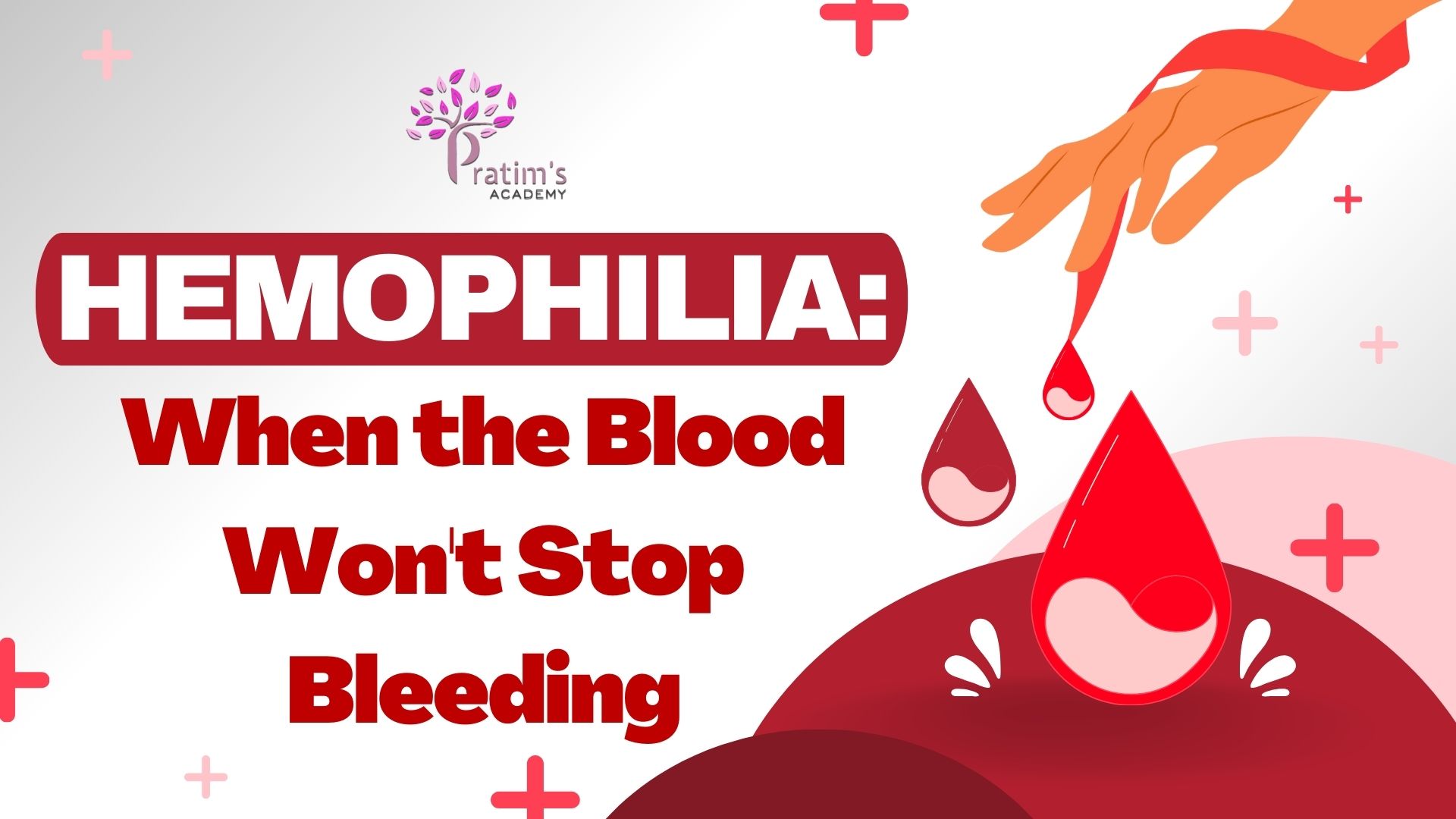Hemophilia: When the Blood Won’t Stop Bleeding
Did you know a rare bleeding disorder once ran through the British royal family?
They called it the “Royal Disease“, not because it was luxurious but because it silently haunted the bloodline of Europe’s most powerful royals. In the 19th century, Queen Victoria of Britain unknowingly passed a rare bleeding disorder—hemophilia—to her descendants.
Imagine getting a small cut and watching it bleed endlessly. That’s what life can be like for someone with hemophilia, a condition where the blood doesn’t clot the way it should. But science has come a long way, offering hope, care, and even a future without fear. Let’s understand what it is, how it happens, and how life can be managed with the right care.
What is Hemophilia?
Hemophilia is a genetic bleeding disorder where the blood lacks certain clotting factors—proteins that help stop bleeding. Normally, when we get injured, our body activates a chain of reactions known as the coagulation cascade. This process involves around 13 different clotting factors (named Factor I to XIII) that work like a team to form a stable blood clot.
In people with hemophilia:
- Hemophilia A occurs when there’s a deficiency or absence of Factor VIII.
- Hemophilia B (also known as Christmas Disease) happens due to lack of Factor IX.
Because these factors are missing or not working properly, the clotting process is delayed or incomplete—leading to prolonged bleeding even after minor injuries. In severe cases, bleeding can happen spontaneously, especially inside joints, muscles, or the brain.
Doctors usually categorize haemophilia based on how much clotting factor the blood contains.
- Severe: Less than 1% of normal clotting factor
- Moderate: 1–5%
- Mild: 5–40%
People with severe hemophilia often experience frequent bleeds, even without any injury, while those with mild hemophilia may only notice it during surgery or trauma.
Can someone inherit hemophilia from a parent?
Yes, mostly. It’s a genetic disorder, which means it’s passed down through families. Interestingly, mothers often carry the gene silently and pass it on to their sons. It is typically inherited through the X chromosome, primarily affecting males, though females can also have bleeding symptoms often mistaken for normal menstruation.
The theme of this year’s World Hemophilia Day, ‘Access for All: Women and Girls Bleed Too’ highlights the urgent need to close gender gaps in diagnosis and care. Women with bleeding disorders often face a double burden: their symptoms are dismissed as ‘normal,’ and a persistent bias frames hemophilia as male-only. This results in delayed or missed diagnoses and inadequate care.
What Are the Symptoms?
Here’s what may raise red flags:
- Easy bruising
- Frequent nosebleeds
- Prolonged bleeding from cuts or surgeries
- Swelling and pain in joints (due to internal bleeding)
- Blood in urine or stool
- In babies, you might notice big bruises from crawling or bleeding after vaccinations.
How Is It Treated?
- There’s no permanent cure yet, but hemophilia can be managed well.
- Treatment usually involves infusions of the missing clotting factor—either during a bleeding episode or as a routine preventive measure. Many countries now use recombinant (lab-made) clotting factors that are safer and more effective.
- In recent years, gene therapy is showing hope, aiming to ‘fix’ the faulty gene and offer a long-term solution.
- Healthcare providers and the public must be educated to recognize early signs and make bleeding disorder screening a routine part of health check-ups for women and girls.
Can People with Hemophilia Live a Normal Life?
- Absolutely. With proper care, education, and early diagnosis, children with hemophilia can play, study, and even go on adventures—just with a few precautions. The key is awareness, access to treatment, and support from family and doctors.
A Silent Struggle in Developing Countries
- Sadly, in many parts of the world—including some areas in India—lack of awareness, delayed diagnosis, and poor access to treatment make life harder for patients with hemophilia. People often misdiagnose patients or fail to provide the proper medication on time.
- Organizations like the World Federation of Hemophilia (WFH) and the Haemophilia Federation of India (HFI) are working tirelessly to change that.
Let’s Wrap It Up
- Hemophilia may sound scary, but knowledge changes everything. By understanding it, talking about it, and supporting those who live with it, we can help make the world a safer, kinder place for people with this condition.
- Because sometimes, a little awareness can stop a lot of bleeding.
References:
- Centers for Disease Control and Prevention (CDC) – Hemophilia
- World Federation of Haemophilia (WFH) – About Hemophilia
- National Hemophilia Foundation (NHF) – What is Haemophilia?
- Hoffbrand’s Essential Haematology (8th Edition) – Chapter on Bleeding Disorders
- National Institutes of Health (NIH) – MedlinePlus: Haemophilia
- Srivastava, A. et al. (2020). WFH Guidelines for the Management of Hemophilia, 3rd edition. Haemophilia.



